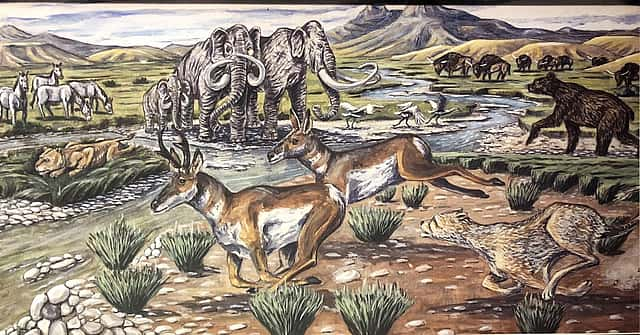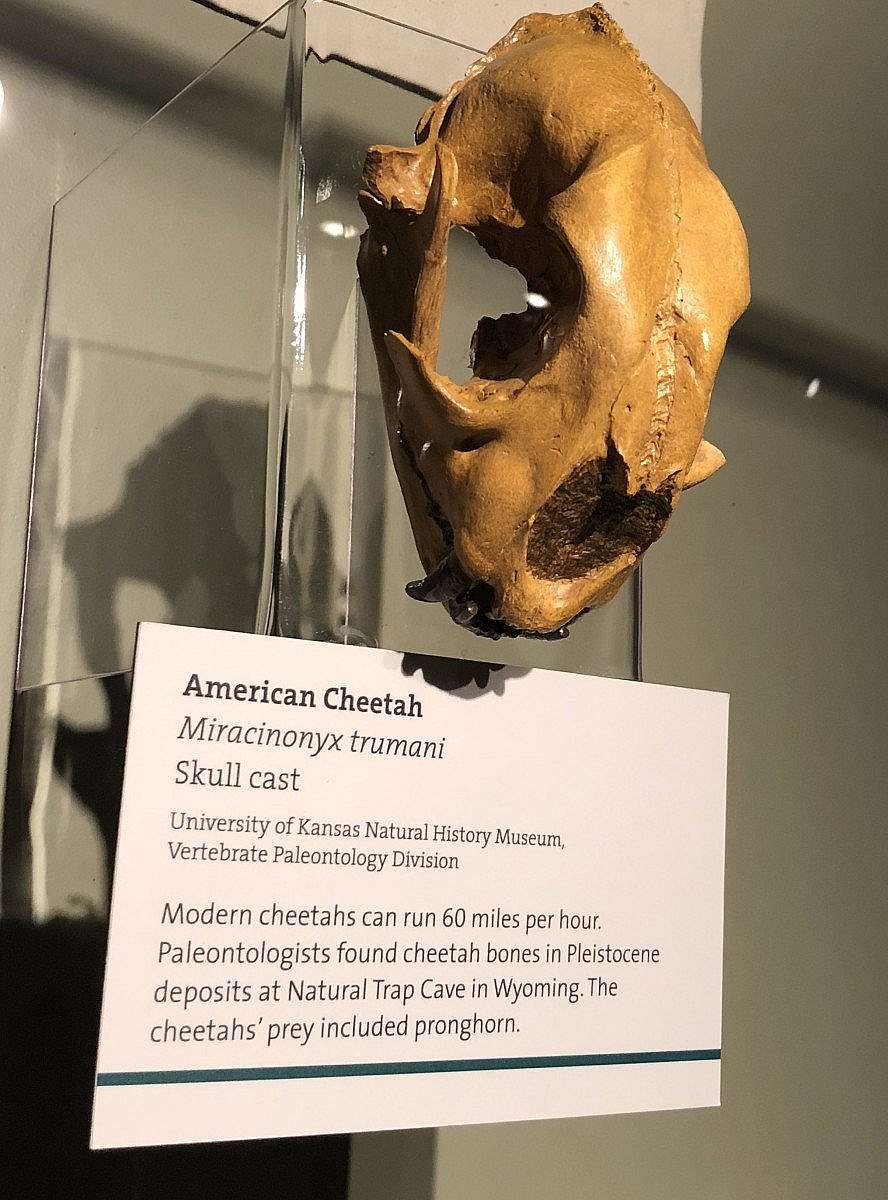
Museum Minute: The American Cheetah
The American Cheetah is a prehistoric mammal that roamed Northern Wyoming in the Miocene and the Pleistocene Epochs. The American Cheetah is thought to be the driving evolutionary force responsible of the speed of today’s Pronghorn Antelope.

The two organisms overlap in their history with the American Cheetah going extinct at the end of the Pleistocene Epoch (about 10,000 to 12,000 years ago) and the Pronghorn Antelope survived until today. The Pronghorn Antelope is the fastest animal in the Western hemisphere reaching and exceeding speeds between 50 to 70 miles per hour. Today there is no land animal known to keep up with the antelope. The leading theory is that this prehistoric cheetah is one of the few organisms that used to predate on the Pronghorn Antelope.
The Draper Natural History Museum at the Buffalo Bill Center of the West has an American Cheetah skull cast. It was excavated from the Natural Trap Cave. This cave is located in the Bighorn Basin. It has yielded thousands of fossils exceeding 20,000 years of age. The reason being the cave is located underground, from the outside it’s just a 15 to 20 foot opening but the pit itself is about 80 to 85 feet deep. This site in particular has accumulated so many bones and fossils of organism because it’s suspected to be part of a natural migratory corridor. Besides the American Cheetah fossil found, bones of mammoths, short faced bears, lions, and camels have been found.
Museum Minute was a series co-produced with Wyoming Public Media (WPM).
Written By
Kamila Kudelska
Kamila Kudelska was the multimedia journalist for the Center and for Wyoming Public Media. In that role she told the hidden stories of all five museums and reported on the news of northwest Wyoming. Kamila has worked as a public radio reporter in California, Poland and New York. She enjoys skiing (both downhill and crosscountry) and loves to read. Since has since taken on a larger role with Wyoming Pubic Media.

